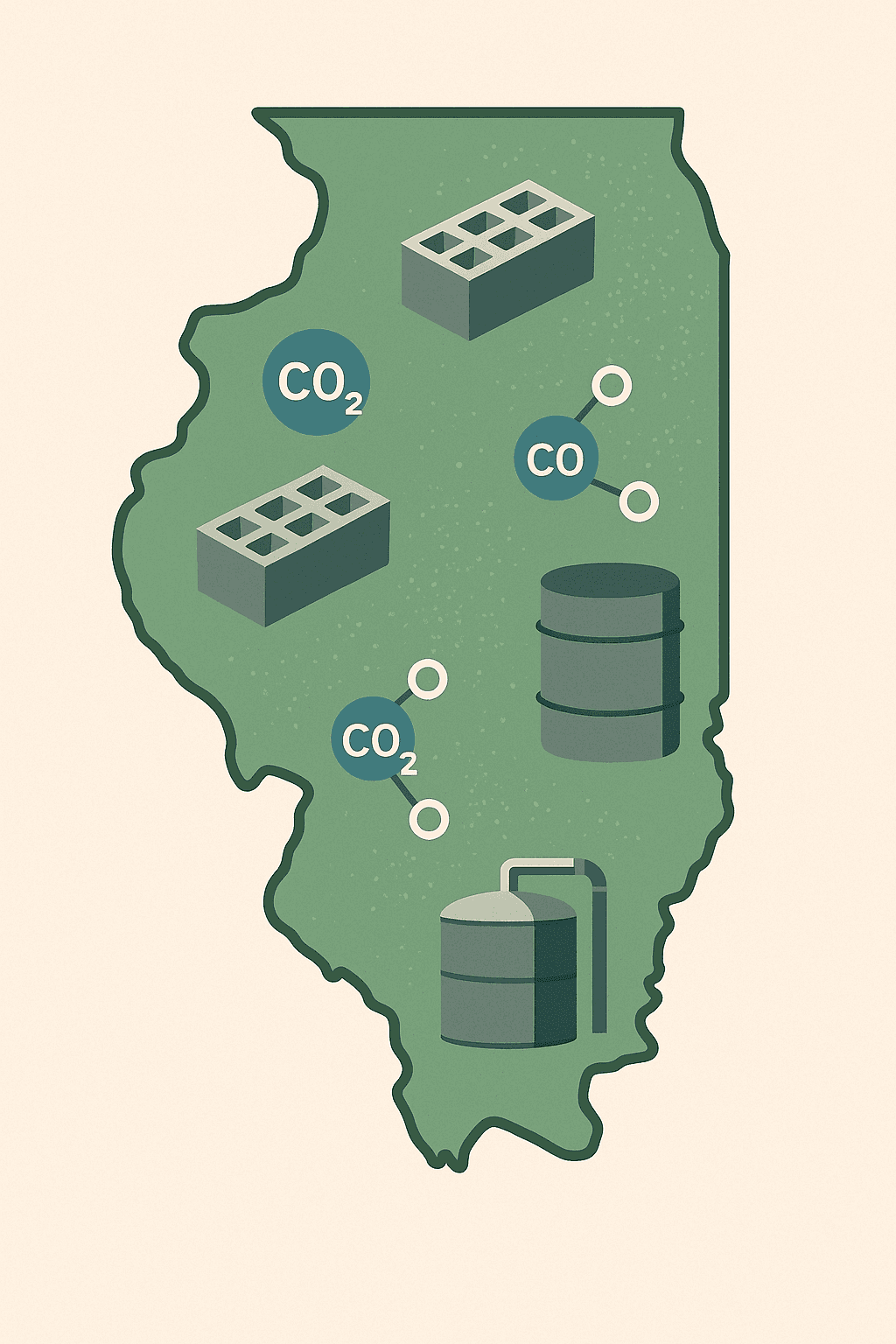Illinois HB 5461: Carbon-Smart Concrete’s Near Miss
The Concrete Carbon Utilization, Reduction, and Removal Breakthrough Act (HB 5461) almost turned Illinois into a test lab for low-carbon concrete. The bill died on January 7, 2025, yet its blueprint of tax credits for Environmental Product Declarations (EPDs) and performance-based specs is a spoiler trailer for what will almost surely return. Concrete producers who wait for the sequel risk falling behind when the curtain rises again.


What HB 5461 Promised
Picture a Marvel origin story, but for cement. HB 5461 offered two super-powers:
- A performance-based tax credit pegged to actual embodied-carbon scores on state projects, encouraging mixes that beat baseline Global Warming Potential (GWP) values by at least 20 percent (Bill text, 2024).
- A separate credit to offset the cost of installing EPD software and sensors at batch plants, capped at 30 percent of qualified expenses per facility (Bill text, 2024).
Together they would have nudged every producer bidding on Illinois roads, bridges, and university builds to measure first, cut second.
Why Lawmakers Targeted Concrete
Concrete alone drives roughly 8 percent of global CO₂ emissions (IEA, 2024). Illinois pours enough every year to fill Willis Tower twice, according to the state DOT materials bureau estimate, though a precise number is not publicly reported. Public agencies buy more than 30 percent of all concrete in the United States (E&E News, 2024), giving government specs outsized sway.
Performance Specs Beat Recipe Specs
Traditional DOT specs read like a grandmother’s cake card, listing cement type, water-cement ratio, and curing times. HB 5461 flipped the script to performance targets: hit the strength, durability, and GWP ceiling, choose any mix design you like. That shift unlocks slag, limestone calcined clay, carbon-cured blocks, even captured CO₂ injection technologies now being piloted from Peoria to Peoria, Arizona.
The Bill Stalled—Momentum Did Not
Session Sine Die sounds like a metal band yet simply means the clock ran out. Supporters have already signaled plans to refile in 2026, and Chicago’s Department of Assets, Information and Services is drafting its own low-carbon concrete spec for city work this fall. Similar laws are live in Colorado and New Jersey, so the regulatory tide is clearly coming in despite this hiccup.
Get Your EPD House in Order Now
Waiting for final legislation is like waiting to train until after the marathon gun fires. Producers who bank embodied-carbon data today will walk onto the next bid with proof, not promises. Three practical moves:
- Pick a partner who makes plant data collection painless and handles the scut work of aligning with the dominant Product Category Rule. Your lab techs have better things to do.
- Use at least a full calendar year of utility and material data, or a solid three-month snapshot for new lines if you plan a prospective EPD. Update annually.
- Publish through a program operator already trusted by Illinois specifiers, such as Smart EPD or UL, so reviewers glide through your paperwork.
ROI: The Bulls Rebuild Analogy
Remember when the Chicago Bulls rebuilt around young talent and snagged playoff buzz before the ink dried? Same logic applies here. Put verifiable low-carbon mixes on your spec sheet and you instantly qualify for every future public job that references HB 5461 language. The public sector funnels more than $100 billion a year into roadwork alone (EDF, 2024). Snag even one percent of that pie and the cost of an EPD looks like spare change. No joke.
Watch the Next Legislative Tip-Off
Illinois’ spring session gavel falls in January 2026. Producers who have credible EPDs on the shelf by then can pivot from legislative spectators to starting lineup. Everyone else will still be lacing up their shoes, probabaly too late.
Frequently Asked Questions
Does HB 5461 apply today to my concrete plant in Illinois?
No. The bill expired on January 7 2025 without a floor vote. A new version would need to be introduced in the 104th General Assembly.
Is there any benefit to creating an EPD before a law passes?
Yes. State and municipal buyers already score bids using GWP data, and early EPDs help you benchmark mixes, secure R&D tax incentives, and signal readiness when legislation lands.
How large was the proposed EPD technology tax credit in HB 5461?
Up to 30 percent of qualified costs per production facility, subject to annual funding limits (Bill text, 2024).
Do I need a new Product Category Rule if the current one expires next year?
Not immediately. Your existing EPD stays valid under the old PCR until renewal, but your next edition must cite the updated rule or an equivalent alternative.
Which program operator do Illinois agencies typically recognize?
Smart EPD and UL have the most Illinois-referenced declarations today, but the bill did not restrict choices, so any ISO 14025-compliant operator would qualify.
